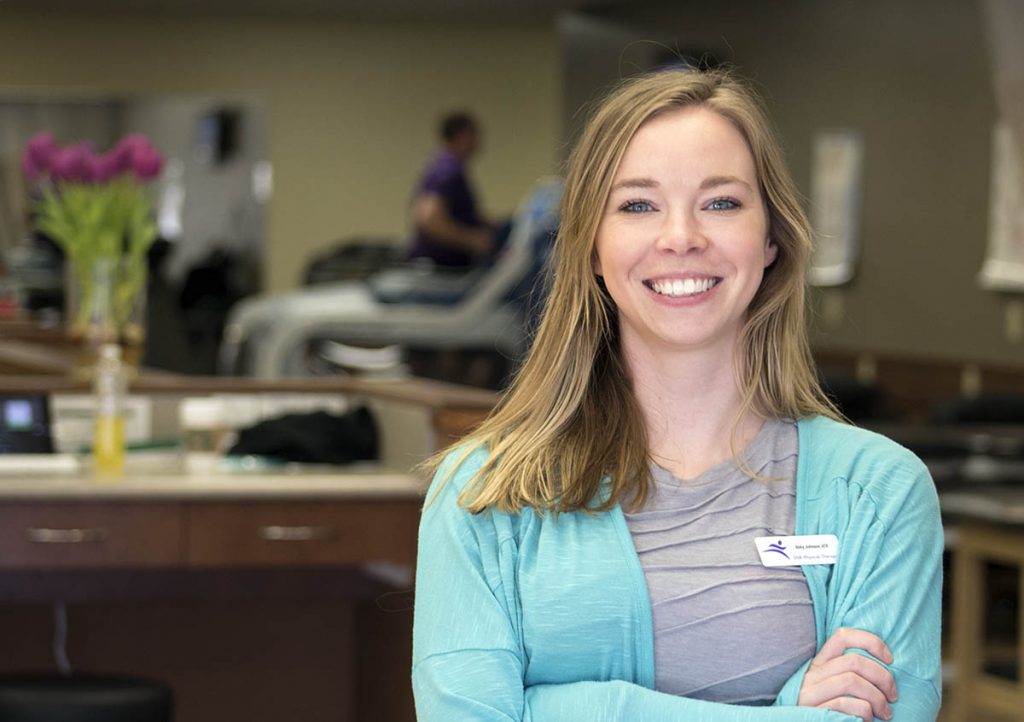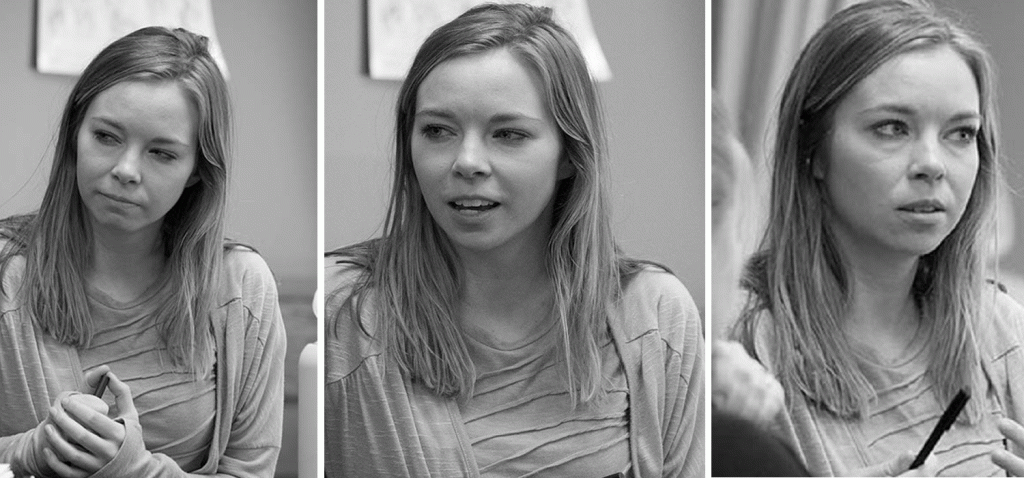
With the rise in injury rates for student and professional athletes, athletic trainers are becoming more important to have on the staff of athletic departments, and sports organizations and clubs. An athletic trainer is not only a certified and multi-skilled health care professional, but he or she must also go through a rigorous education program. Often confused with physical therapists or personal trainers, athletic trainers bring their own set of skills, specialties, and education to a medical team that works with injuries.
Ever wonder what an athletic trainer does day-to-day? Meet Abby Johnson, an athletic trainer for OSR Physical Therapy.
What do you do as an athletic trainer for OSR?
As an athletic trainer, I work with physical therapists on patient care. This means helping patients get to their next exercises and keeping them on track. I collaborate with physical therapists on a plan of action for the patient. Physical therapists usually take the lead, and then as the care continues, athletic trainers will take a more hands-on approach. If it’s something geared towards manual therapy I’ll take more of a lead on it.
How did you become an athletic trainer?
I’ve been an athletic trainer for about 5 years. I’ve been involved in sports all my life and wanted to stay involved in the athletic scene. I definitely didn’t want a desk job, so becoming an athletic trainer was a perfect fit for me.
Do you specialize in anything?
I specialize in a manual therapy technique called the Graston Technique. Graston Technique is good for chronic and overuse injuries like tendonitis. It’s also good for any pain or injury that’s been lingering and may need more intense attention towards it. It’s kind of like getting a deep tissue massage. Pilates is also my specialty.
What does your typical day look like?
Because we try our best to individualize care for each person, there’s really not a typical day. There’s not necessarily one certain way we’re going to do it every time and for every patient. We base the patient’s care for that session on how they are feeling on that day. We also determine if we need to change or modify the program.
However, sessions usually last about an hour long with attention from both the athletic trainer and physical therapist. Usually, we’ll have the patient do a warm up first, then the exercises or manual therapy, and then a cool down or icing. But this can always vary depending on the patient’s needs for that day.
When should someone take a break from physical activity?
It’s really difficult to know when you should take a break to avoid injury. However, you should definitely stop if you have an acute injury, meaning you land incorrectly and feel a pop or a snap. An increase of pain is also an indication that you should stop. For chronic pain – something that doesn’t go away after one or two days – is another reason to slow down. It can also be pain that doesn’t go away with rest or tends to bother you if you’re just sitting down or doing normal activities. Sleep disruption is another sign. In any of these cases, you should decrease your intensity and maybe seek some help.
What’s one tip for athletes recovering from an injury?
Be patient with treatment. Don’t be discouraged if you have a setback or if things don’t go as planned. Don’t lose hope if something doesn’t work out right away. These things take time, and we can always try something new. That’s why we’re here – to try different things if it’s not fixing the problem.



